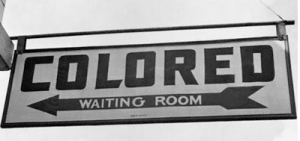 The beginning of the desegregation of the Greyhound Bus Station waiting rooms in Louisville, KY, took place in 1953 and continued with the activism of Charles Ewbank Tucker, who was a minister, a civil rights activist, and an attorney. The actual challenge began in December of 1953 when William Woodsnell took a seat in the white waiting area of the Louisville Greyhound Bus Station and refused to move. Woodsnell was arrested and charged with disorderly conduct. The next day, Charles E. Tucker, Woodsnell’s attorney, took a seat in the white waiting area of the bus station and no one approached him or asked him to move. The Louisville Greyhound Bus Station was the starting point for segregated waiting rooms for passengers heading south aboard Greyhound buses.
The beginning of the desegregation of the Greyhound Bus Station waiting rooms in Louisville, KY, took place in 1953 and continued with the activism of Charles Ewbank Tucker, who was a minister, a civil rights activist, and an attorney. The actual challenge began in December of 1953 when William Woodsnell took a seat in the white waiting area of the Louisville Greyhound Bus Station and refused to move. Woodsnell was arrested and charged with disorderly conduct. The next day, Charles E. Tucker, Woodsnell’s attorney, took a seat in the white waiting area of the bus station and no one approached him or asked him to move. The Louisville Greyhound Bus Station was the starting point for segregated waiting rooms for passengers heading south aboard Greyhound buses.
Though there were states with laws that enforced segregation on buses, there were no such laws in Kentucky. When Charles E. Tucker challenged the practice in Louisville, the Greyhound Bus Company admitted that there was not a company policy on segregated waiting rooms, and the segregation was a local custom. Throughout the South, there were challenges to the laws and the customs of segregation.
In 1955, the Interstate Commerce Commission (ICC) banned segregation on buses in interstate travel, which did not include bus terminals, waiting rooms, restaurants, and bathrooms. In 1961, the ICC issued new rules ending discrimination in interstate travel. For more see “Jim Crow…,” Plaindealer, 01/01/1954, p. 1; “Arrest Negro for sitting in white Ky. waiting room,” Jet, 12/24/1953, p. 6; heading “Civil Rights,” p. 191, second column, last paragraph in The Encyclopedia of Louisville, by J. E. Kleber; The Road to Civil Rights; waiting for the ICC, a U.S. Department of Transportation website; and search the Department of Transportation website for additional information on the desegregation of public transportation in the United States.